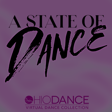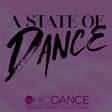
Lighting Dance with Dennis Dugan
Season Two, Episode Two: This month’s guest is Dennis Dugan. Lighting Designer/OhioDance Board Member, Dennis is a recipient of the 1997 Ohio Dance Award for outstanding contributions to dance in Ohio and has been working with light since the seventies. His early experiences in New York focused primarily on modern dance. Dennis worked with The Kathryn Posin Dance Company. The New York years also included off-off Broadway theater. Since returning to the Cleveland area in 1982, Dennis has worked with dance and theater organizations throughout Ohio. Although dance is his favorite performance art, Dennis also enjoys exploring sculpture, photography, and lighting public art.
OhioDance A State of Dance is a six-part series coming out the fourth Friday of each month through November 2023.
This podcast is driven by the OhioDance mission to secure the foothold of dance in Ohio through increasing visibility, firming viability, and elevating the position of dance in Ohio.
In 2016, a five-person team set out on a mission to capture the achievements of persons and institutions who have shaped the intricate diversity of dance history and practice within the state of Ohio and weave them together in an easily accessible digital format. This we call the OhioDance Virtual Dance Collection. As of 2024 we have highlighted 37 individuals and institutions. The team has traveled over 5000 miles and interviewed hundreds of individuals in all five regions of Ohio. vdc.ohiodance.org
If you like what you are listening to and are not a member of OhioDance, you can go to ohiodance.org and click the membership button to join and receive the many benefits that come with your membership. You can also donate through our purple donate button.




